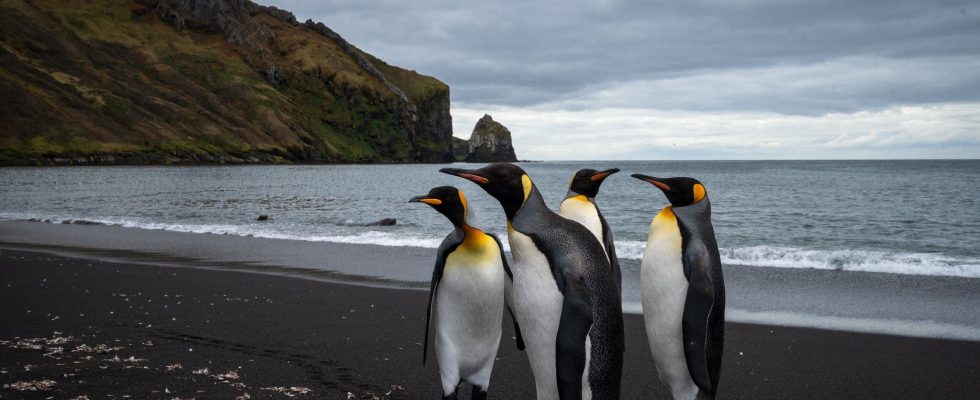In France, since December 5, free-range breeders have been forced to confine their poultry. The cause is the appearance of several outbreaks of highly pathogenic avian influenza in different departments. Latest: several cases identified in a duck farm in Vendée. While the virus is progressing in France and throughout Western Europe, causing distress to many professionals, it is on the other side of the world that scientists are watching. Because the disease is spreading among wild mammals, and first affected penguins in Antarctica. “One of the greatest ecological disasters of modern times”, as several specialists anticipated a few months ago, is unfortunately happening.
It was Monday January 29 that the story changed. A king penguin is discovered dead on South Georgia Island. This individual would have been infected with H5N1, reports Antarctic Wildlife Health Network, although investigations are still ongoing as investigators have not noted any increase in penguin deaths at this location. Still in Antarctica, some 900 kilometers further west, on an island in the Falklands, two gentoo penguins – another species of these well-known black and white birds – were discovered dead shortly after. They, it is certain, succumbed to avian influenza. Quoted by the New York Times, Sally Heathman, head of communications for the government of the British archipelago, goes further, and indicates that as of January 30 “more than 200 dead or dying chicks have been reported”. Some appeared ill or lethargic, and a small number had neurological symptoms. Tests are underway to detect possible H5N1 infection.
After conquering South America, the virus was detected for the first time last October in the Antarctic region on different animals: Dominican gulls, elephant seals and fur seals. Before this date, no highly pathogenic avian influenza virus had ever been documented in the region. Penguins therefore probably have very reduced immunity to defend themselves. However, previous epidemics in other regions of the world have shown that these birds are susceptible to the disease. In Chile, for example, where H5N1 was spreading rapidly last year, the epidemic caused the death of thousands of Humboldt penguins.
While the extent of the virus’s spread among Antarctic penguin populations remains uncertain, scientists are concerned because of their social organization. Currently, we are witnessing the formation of gigantic colonies of tens of thousands of penguins for the breeding season. The risk is therefore real: once an individual is infected, the virus could spread quickly, a bit like intensive breeding, causing massive mortality.
The challenge of stopping the spread of the virus
So far, no cases have been recorded on the Antarctic continent itself, according to mapping data, but this could be explained by very few people present to record possible deaths. Avian flu adds to the pressures already experienced by these pristine polar ecosystems: a 2018 study warned that Antarctica’s penguins, already threatened by the climate crisis and overfishing, “could disappear” by the end of the century. The virus could also decimate the populations of seals and sea lions in the region, which also group together in colonies to reproduce. Barely several months after the first cases detected in South America, tens of thousands of specimens were reported dead. H5N1 is spreading, irremediably, and stopping it now seems almost impossible.
At the opposite extreme, at the North Pole, the disease is also ravaging wild populations in the Arctic. In December, it was confirmed that, for the first time, a polar bear had died from H5N1. But, given their presence in isolated places, it is very possible that other individuals have contracted the virus.
